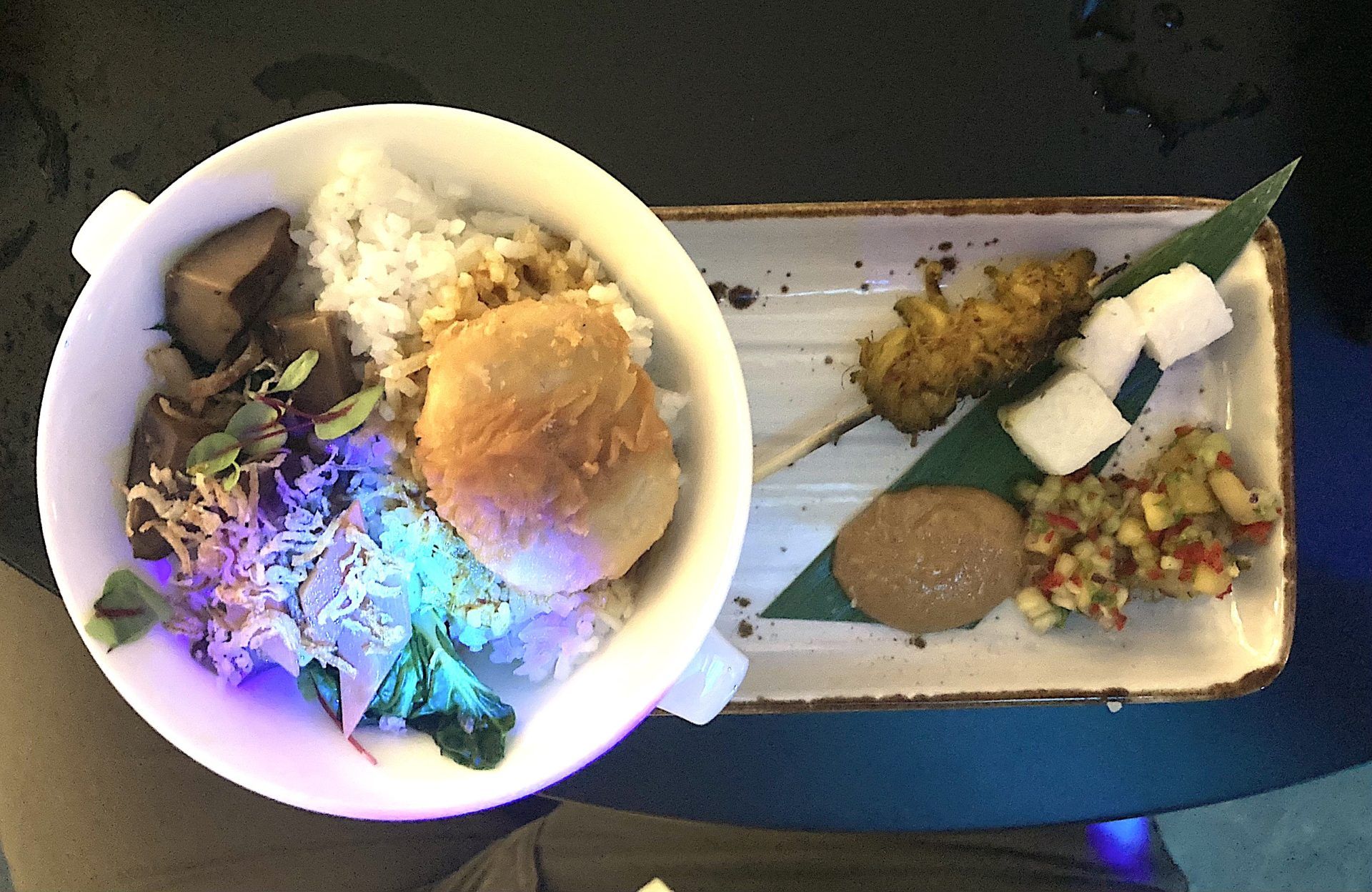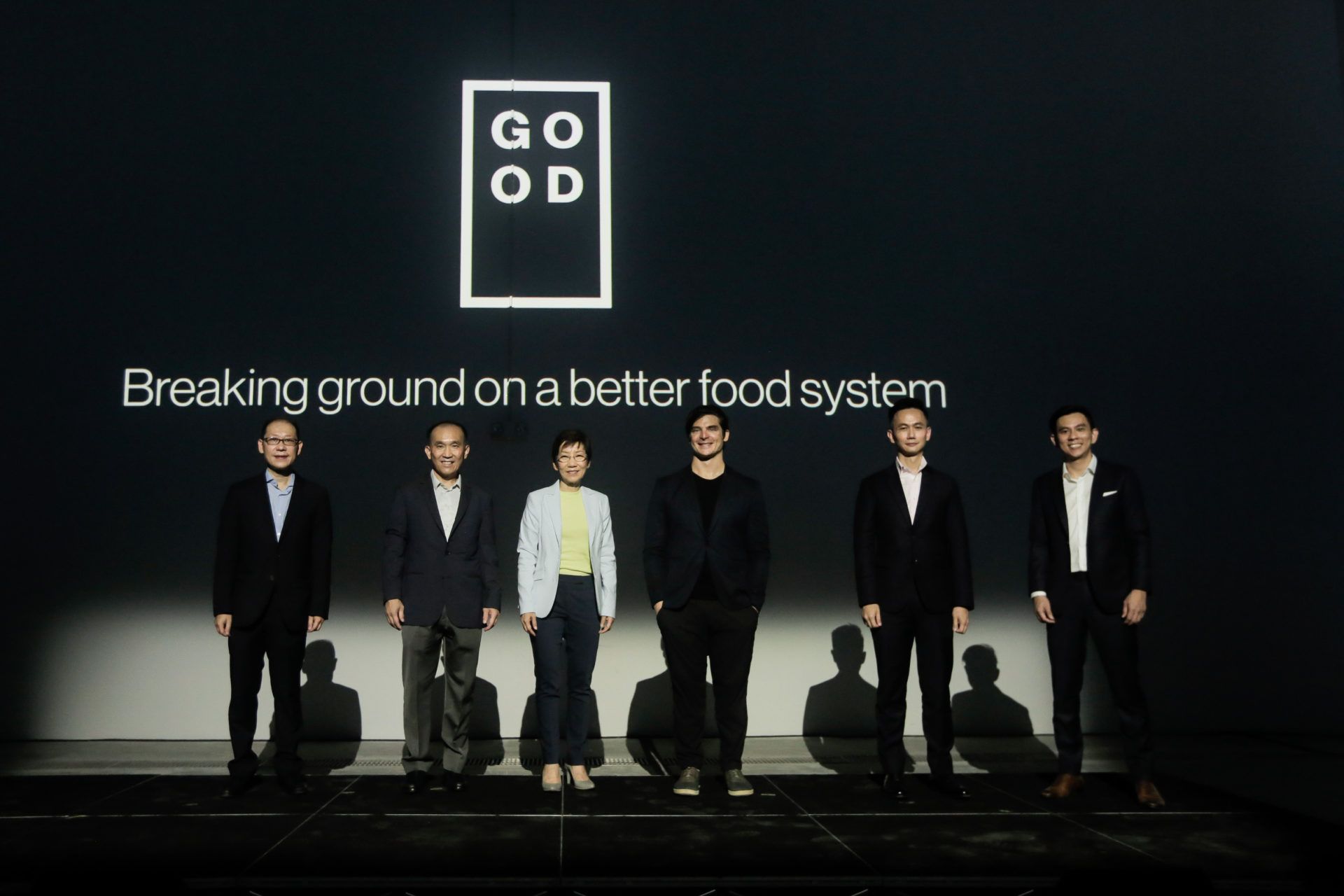Eat Just subsidiary GOOD Meat recently broke ground on what it says is “the largest cultivated meat facility in Asia” – and this AFN reporter went along to give some of the company’s animal-free flesh a taste test.
The facility:
- The Singapore site is expected to be up-and-running early next year, churning out “tens of thousands of pounds” of cultivated chicken meat each year once it hits full capacity, according to the company.
- It will house “the single-largest bioreactor in the cultivated meat industry to date” – a 6,000-liter behemoth built by ABEC, which is also kitting out GOOD Meat’s planned protein megafactory in its native US.
- A team of around 50 researchers, scientists, and engineers will work out of the Singapore site.
The event:
An assemblage of influencers, investors, and journalists attended the groundbreaking ceremony at the industrial unit which will host GOOD Meat’s bioreactor.
Entering the building at 8:45 am on a standard, sweltering Singapore workday, I had momentary flashbacks to the warehouse raves and Crystal Maze binge-watchings of my misspent youth. The darkened space rippled with a thumping electronica soundtrack and flashing lights; while video montages of lush forests, wildfires, and factory farming were being projected onto the walls.
Events personnel dressed head-to-toe in black, chattering every now and then into their headsets in order to communicate with some unseen hive mind, motioned me over to my designated table. In style and execution, it was all very slick; if a tad alienating at the same time. Sat next to me, my just-met dining companion described the whole experience as “a bit dystopian.”
While that was presumably not the intention when it came to the aesthetics of the event itself, it was certainly the message that GOOD Meat wanted to send about the food industry as the music piped down and CEO Josh Tetrick began speaking on stage.
“This is the sound of meat production today,” he said, before an audio clip of livestock animals screeching in distress, with violent bangs and clangs in the background, punctuated the room.
Then: “This is how it’ll sound in the future” – the gentle, soothing hum of a bioreactor at work.
Of course, it’s a convenient oversimplification to imply that all conventional meat is produced industrially (and worth remembering that GOOD Meat’s cultivated chicken itself relies on fetal bovine serum, a slaughterhouse byproduct.) But it was an effective bit of marketing nonetheless.
The menu:

We were served two Singaporean dishes, each made from a different cultivated chicken product and designed in partnership with local hawkers (named here in parentheses with their location). The bioreactor-birthed bounty included:
- Hainanese curry rice with cultivated chicken bite and assorted vegetables and pickles (Loo’s Hainanese Curry Rice, Tiong Bahru Market)
- Cultivated chicken satay with pineapple salsa, ketupat (rice cakes), and peanut sauce (Keng Eng Kee Seafood, 124 Bukit Merah Lane 1 Housing Estate)
The verdict:
While both dishes were very tasty, we’ll be zeroing in on the cultivated chicken component here, rather than the other parts.
Hainanese curry rice
Hainanese curry rice stalls are a popular option for a cheap, filling meal across Singapore. They serve a thin, coconut-based curry sauce over plain rice; diners can then add accoutrements of their choice such as deep-fried battered pork or chicken chop, braised pork belly, spicy seafood, and stewed cabbage.
Unlike the mounds of rice and lashings of curry you’d typically be served at the hawker center, this dish was (necessarily) miniaturized so as not to embarrass the single cultivated chicken bite it was served with.
Holding it, and then biting into it, was like eating a ‘clean’ McDonald’s McNugget. It was less greasy than Ronald’s version tends to be; but, just like its fast-food forebear, the meat within was without any discernible texture – a nondescript, homogenous mass with seemingly no variation in either the way it looked or the way it felt in the mouth.
And in this case, that’s a good thing. Tetrick, among others, has often made the point that for alt-protein to be successful, it has to accurately recreate existing, conventional meat products in taste, texture, and form. US restaurant-goers ordered a reported 2.3 billion chicken nuggets and 1.5 billion chicken strips in 2018. If all of those could be cultivated in bioreactors — rather than being harvested from animals that need feeding and watering — then it’s clear how massive the potential environmental impact could be.
In terms of taste, GOOD Meat’s nugget tasted like… well, chicken. If anything, it may have been more definitively ‘chicken-y’ in flavor than the animal-based bites purveyed by McDonald’s and others.
In summary: an impressive, tasty product that could become a like-for-like replacement for chicken nuggets, burgers, and so on – should the production costs come down.
Chicken satay
Satay are small skewers of charcoal-grilled marinated meat served across Southeast Asia. In Singapore, chicken, pork, and mutton are most often used and are typically served with a spiced peanut dipping sauce which sometimes has a kind of pineapple jam added to it.
Here, GOOD Meat deployed its ‘cultivated chicken 2.0,’ offering more of a ‘natural’ meaty structure than the type used in the curry rice dish.
The texture was something approximating roasted chicken thigh, comprising long, fibrous strands. However, while standard satay sticks are normally made with roughly cubic chunks of flesh, this product gave the impression of having been grown in flat sheets that were then folded and threaded onto the skewer to give the effect of whole-muscle meat.
In summary, the chicken on offer here tasted — again — like chicken. What feels like an early-days attempt to mimic muscle fibers was an impressive effort, if not yet entirely convincing.
At the end of the day, the litmus test of good food is that it leaves you wanting more. And with both the cultivated chicken dishes we tried, I definitely could’ve done with, let’s say, six times as many nuggets and 10 times as many satay sticks (though it was probably still too early on Friday morning to be loading up with meat.)
Keep up the GOOD work, GOOD Meat!
The outlook:
Singapore is the first, and as yet only, jurisdiction to have approved a cultivated meat for public sale (specifically, GOOD Meat’s cell-based chicken.)
Since securing that approval in December 2020, GOOD Meat has sold small amounts of its product below cost via partner restaurants and hawkers in the city-state.

Speaking at the event, Tetrick said each cultivated chicken nugget costs around $50 to produce; the company is aiming for price-parity with conventional chicken by 2030.
“To do that, we need to make it in much larger vessels,” he said. “We need to get the cost of the nutrients and the cells way down; we need to get the density of the cells way up.”
“Even when we’re making tens of thousands of pounds [in this new facility at a significant] cost reduction, it’s still far off from where we need to go.”




